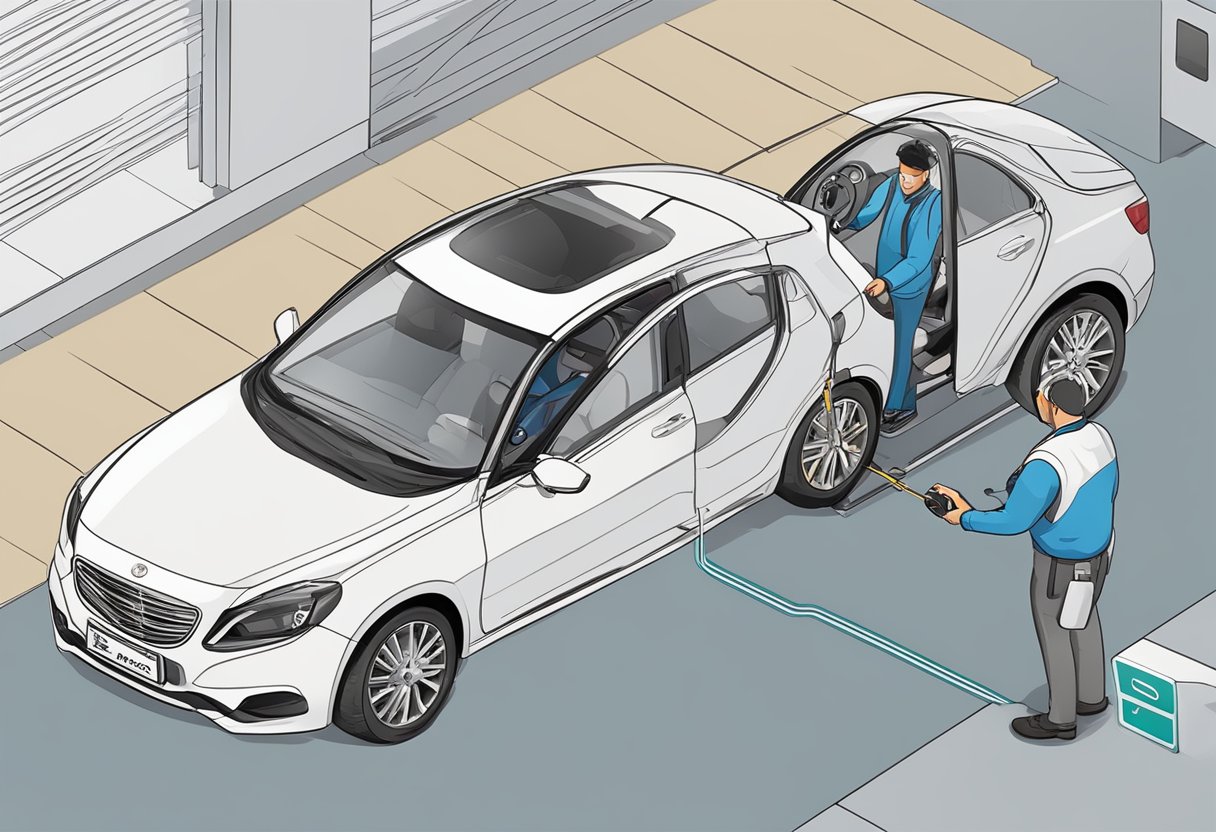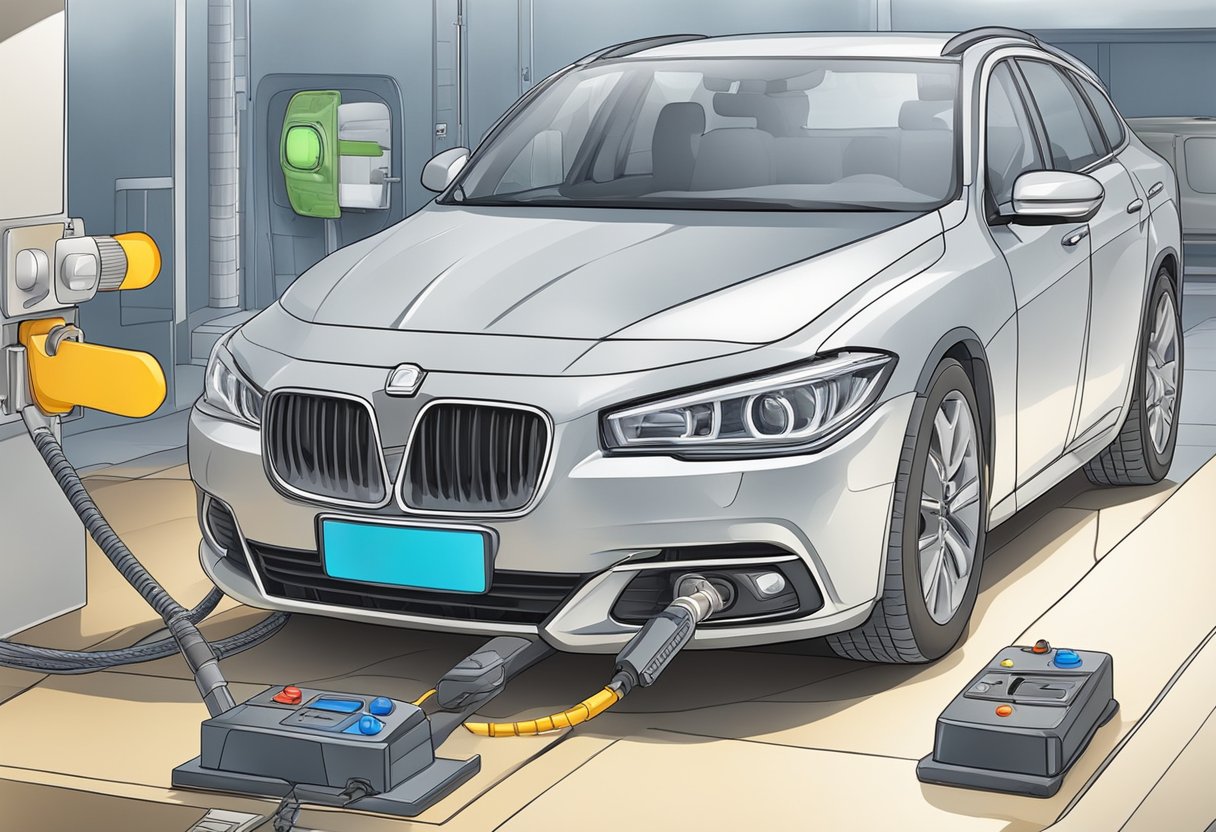Passive disabling devices are an essential vehicle safety feature that helps prevent theft. These devices are installed by manufacturers in some vehicles and are designed to automatically turn on by themselves. Once you turn off the engine, remove the key from the ignition, and exit your vehicle, the passive disabling device activates.
Passive disabling devices are a type of security system that prevents unauthorized access to your vehicle. These devices work by disabling the engine or other critical systems, making it impossible to start the car without the correct key. Some passive disabling devices include car alarms that immediately activate after your car is off, the key is out of the ignition, and the doors close. Depending on the make and model of your car, it may have a passive disabling device such as PASS Lock and a chip-enhanced key that prevents the vehicle from starting without it.
Passive disabling devices are an effective way to prevent car theft and protect your vehicle. They are also a great way to reduce your insurance premiums, as many insurance companies offer discounts for vehicles with passive disabling devices installed. If you’re looking to upgrade your vehicle’s security system, consider installing a passive disabling device to keep your car safe and secure.
Understanding Passive Disabling Devices
If you’re concerned about car theft, you might want to consider installing a passive disabling device. These devices are designed to prevent a car from being started or moved without the right key or fob.
Types of Passive Disabling Devices
There are different types of passive disabling devices, but they all work in similar ways. One popular type is an immobilizer. This device prevents the engine from starting unless the correct key or key fob is present. Immobilizers use a chip-enhanced key or fob that sends a signal to the car’s computer. The computer then checks the VIN (Vehicle Identification Number) to make sure it matches the key or fob. If the VIN and key/fob match, the car will start. If they don’t match, the car won’t start.
Another type of passive disabling device is called Passlock. Passlock is a security system that uses a sensor in the ignition lock cylinder and a magnet in the ignition key to prevent unauthorized vehicle operation. Passlock works by sensing the rotation of the lock cylinder and the presence of the magnet. If the correct key is not used, or if the lock cylinder is tampered with, Passlock will prevent the engine from starting.
Passive vs. Active Disabling Devices
Passive disabling devices are different from active disabling devices. Active disabling devices, such as car alarms, must be activated by the owner. Passive disabling devices, on the other hand, work automatically. They set themselves when the doors close and the key is out of the ignition. Some cars automatically lock car doors when the key travels a certain distance away from the vehicle.
Passive disabling devices are also different from passive safety systems. Passive safety systems protect the occupants of a vehicle and other road users if a crash occurs. They do this by reducing the impact of an accident or the level of injury. Examples of passive safety systems include airbags, seat belts, and crumple zones.
In summary, passive disabling devices are a type of security system that prevents a car from being started or moved without the right key or fob. There are different types of passive disabling devices, but they all work automatically. Passive disabling devices are different from active disabling devices and passive safety systems.
How Passive Disabling Devices Enhance Car Security
Passive disabling devices are an effective way to enhance car security. These devices are designed to automatically activate and prevent unauthorized access to your vehicle. They are a great addition to any car security system and can help reduce the risk of car theft. In this section, we will discuss how passive disabling devices enhance car security.
Theft Prevention and Vehicle Recovery
Passive disabling devices are an effective way to prevent car theft. They work by automatically activating when the key is removed from the ignition. This means that the car cannot be started without the key. This feature is especially useful in situations where the car is left unattended for a long period, such as in a parking lot.
Passive disabling devices also make it easier to recover stolen vehicles. Many passive disabling devices have a GPS tracking system that can help locate the car if it is stolen. This feature can be especially useful for law enforcement agencies in recovering stolen vehicles.
Impact on Car Insurance Premiums
Passive disabling devices can also have an impact on car insurance premiums. Many insurance companies offer discounts for cars that have passive disabling devices installed. This is because these devices reduce the risk of car theft, which in turn reduces the risk of insurance claims.
If you are looking to install a passive disabling device in your car, it is important to check with your insurance company first. They may have specific requirements for the type of device that you can install in order to qualify for a discount.
In conclusion, passive disabling devices are an effective way to enhance car security. They prevent car theft and make it easier to recover stolen vehicles. On top of that, they can have an impact on car insurance premiums by reducing the risk of insurance claims. If you are looking to improve your car security, installing a passive disabling device is a great place to start.
Technological Integration in Passive Disabling Devices
Passive disabling devices have come a long way in terms of technological advancements. With the integration of GPS and tracking technology, smart keys, and immobilization, these devices have become more efficient in preventing car theft. In this section, we will discuss how these technologies have been integrated into passive disabling devices.
GPS and Tracking Technology
GPS and tracking technology has been integrated into passive disabling devices to increase their effectiveness in preventing car theft. These devices use GPS to track the location of the car and alert the owner if the car has been moved without their permission. Some systems even allow the owner to track the location of the car in real-time. This technology has proven to be very effective in recovering stolen cars.
Smart Keys and Immobilization
Smart keys and immobilization have also been integrated into passive disabling devices to prevent car theft. Smart keys use a microchip to communicate with the car’s immobilizer and allow the car to start. Without the smart key, the car will not start, making it impossible to steal. Immobilization technology prevents the car from being hot-wired by disabling the ignition system. These technologies have proven to be very effective in preventing car theft.
In conclusion, the integration of GPS and tracking technology, smart keys and immobilization has made passive disabling devices more efficient in preventing car theft. These technologies have proven to be very effective in recovering stolen cars and preventing car theft.
Are Passive Disabling Devices and AWD Lock Similar in Functionality?
Passive disabling devices and AWD lock function differently. While passive disabling devices prevent a vehicle from starting, AWD lock definition and usage allows the driver to manually lock the all-wheel drive system, providing better traction on slippery surfaces. Both serve distinct purposes in vehicle functionality.
The Role of Passive Disabling Devices in Safety and Prevention
Passive disabling devices (PDDs) are security features installed in some vehicles to help prevent car theft. These devices automatically turn on by themselves, making them convenient for vehicle owners. The PDDs rely on advanced technology such as immobilizers, which prevent the engine from starting unless the correct key or key fob is present. This ensures that only authorized individuals can operate the vehicle.
Reducing Car Theft Incidences
Car theft is a common occurrence globally, and it can be a significant loss to the owner. PDDs have proven to be effective in preventing car theft incidences. According to CarParts.com, PDDs are “passive” because they don’t require any action from the driver to activate them. Once you turn off the engine, remove the key from the ignition, and exit your vehicle, the passive disabling device automatically activates. This means that even if a thief gains access to the vehicle, they will not be able to start it without the correct key or key fob.
Passive Safety Features During a Crash
Passive disabling devices also play a significant role in enhancing the overall safety of automobiles. In the event of a crash, PDDs work in conjunction with other passive safety features like seatbelts and airbags to minimize the impact of the collision. According to RoadSafetyFacts.eu, passive safety systems are designed to “protect vehicle occupants from injury by reducing the forces that act on them during a crash.”
Passive safety features like seatbelts and airbags work by creating a “deformation zone” around the occupants of the vehicle. The deformation zone absorbs the impact of the collision, reducing the forces that act on the occupants. PDDs play a crucial role in ensuring that the occupants of the vehicle remain protected during a crash. By preventing the vehicle from starting unless the correct key or key fob is present, PDDs ensure that the vehicle is not driven by an unauthorized individual who might not be familiar with the vehicle’s safety features.
Overall, the role of passive disabling devices in safety and prevention cannot be overstated. They play a significant role in reducing car theft incidences and enhancing the overall safety of automobiles.
Choosing and Implementing Passive Disabling Devices
When it comes to selecting the right passive disabling device for your vehicle, there are several factors to consider. First and foremost, you want to ensure that the device you choose is compatible with your vehicle make and model. Some popular passive disabling devices include passive door locks, audible alarms, and PASSLock systems, which prevent the vehicle from starting without the correct key.
Another important consideration is where to buy the device. Many auto parts stores and online retailers offer a wide selection of anti-theft devices, including tire locks, steering wheel locks, brake locks, and armor collars. It’s important to choose a reputable retailer that offers high-quality products and reliable customer service.
Once you’ve selected the right device, it’s important to properly install and maintain it to ensure maximum effectiveness. For example, tire locks should be installed on all four tires and tightened securely to prevent them from being removed. Steering wheel locks should be placed in a visible location and secured tightly to the steering wheel.
Regular maintenance is also important to ensure that your device continues to function properly. This may include checking the battery on your audible alarm or lubricating the locking mechanism on your steering wheel lock.
By taking the time to carefully select and properly install a passive disabling device, you can help protect your vehicle from theft and ensure greater peace of mind.
As an Amazon Associate we earn from qualifying purchases.















